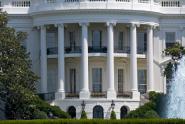Clean Energy Caught in Classic Web
Green is fading but still present

While President Obama is touting his new $447 billion jobs program as a bipartisan endeavor he is remaining committed to his pledge of “change we can believe in.” Indeed, payroll tax cuts for employers and employees alike are drawing praise, enabling the president to also push for better environmental and labor conditions.
Therein lay the heart of the political divide: “Classical” versus “Keynesian” economics, which separate Republicans from Democrats. No issue illustrates the theories better than that of green jobs that has now been broadened to include federal investment in public transport as well as cleaner fossil fuel technologies.
“We shouldn’t be in a race to the bottom, where we try to offer the cheapest labor and the worst pollution standards,” the president intoned during his jobs speech last Thursday. “American should be in a race to the top.”
In his classical economics book published in 1776, “The Wealth of Nations,” Adam Smith argues that the “invisible hand” of free enterprise will over time remedy high unemployment and high prices. Government must step aside so that consumers and businesses can gradually make adjustments and bring conditions back into alignment.
Keynesian economics continues to challenge that school. In his book “the General Theory of Employment, Interest and Money” published in 1936, John Maynard Keynes argues that unseen market forces are ineffective, and later quipping that “in the long run we are all dead.” Government intervention is essential to smoothing out the economic bumps caused by a coarse capitalistic environment.
While critics lampoon Keynesian economics for allowing certain spending jolts to become permanent, its proponents say that the medicine is necessary to revive a sick patient -- a metaphor for using government's treasury to bolster production and lift consumer confidence during recession. That money can be in the form of more spending or tax cuts, with both having the same effect on growth and employment.
The goal of President Obama’s $700 billion stimulus plan in 2009 has been to re-inject that confidence -- a fundamental belief in the American system. At the top of heap has been investment in clean energy and a smart grid. Has it worked?
Hope Glimmers
The president’s supporters are saying that without the stimulus program the nation would have gone into depression while his opponents are arguing that the persistent economic rut indicates the fundamental flaw of government excess.
Skeptics of the president go on to say that green jobs highlight the notion of government’s inherent inefficiencies. Witness the current failures of three major solar manufacturers: Evergreen Solar, SpectraWatt and Solyndra, which collected a $535 million loan guarantee.
When one examines the share of the federal pie allocated to those nouveau enterprises, along with others, and then compares that to the number of jobs created, the results are staggering, critics say. That’s because hundreds of millions in taxpayer money has been used to form relatively few jobs -- jobs that may well have been taken from other industries, they add.
Progressives counter that that the “old school” is out-of-step with the needs of a modern economy and that dirty fuels such as coal and oil will wreak environmental havoc before they run out. Younger folks, they maintain, want to work for mass public transit, renewable energy companies and electric car makers -- the types of programs espoused by the Obama administration.
It is self-serving to argue that solar company failures translate into a larger set of problems for all renewable enterprises, Obama’s supporters say. In solar’s case, the technologies are developed here but they are assembled and manufactured in China where labor is cheap and where the state-owned banks provide inexpensive loans.
If the days of coal and oil are “numbered,” then green subsidies must be continued, Obama supporters say. That includes those for the smart grid that encourages the efficient use of energy as well as those for cleaner fuels to run power plants and cars. The stalwarts of the “old economy” didn’t advocate for reduced subsidies in the wake of the BP spill or after some deadly coal mining accidents, they add.
Hope glimmers. A recent Brookings Institution report found that the clean economy employs 2.7 million across a diverse set of industries that includes modern gas and coal technologies. It also says that “cleantech” has outperformed other industrial segments during the recession. Meantime, a Solar Energy Industries Association says that for each solar job, two or three are created elsewhere in the economy.
A divided Congress means that the president can either introduce bipartisan proposals or he can to try and win on philosophical grounds. High unemployment in combination with diminished trust in both Congress and the president means that some action will soon be taken.
As such, limited investment in clean technology will continue. But it won’t be advertised as a panacea or a jobs program.
EnergyBiz Insider has been named Honorable Mention for Best Online Column by Media Industry News, MIN. Ken Silverstein has also been named one of the Top Economics Journalists by Wall Street Economists.
Follow Ken on www.twitter.com/ken_silverstein
energybizinsider@energycentral.com.
Copyright © 1996-2011 by CyberTech, Inc. All rights reserved.
To subscribe or visit go to: http://www.energycentral.com
To subscribe or visit go to: http://www.energybiz.com